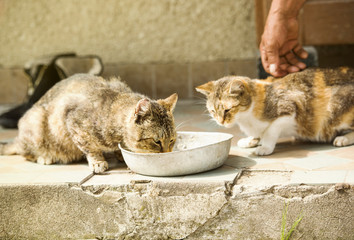Faith
in Almighty
It was a chilly winter
evening of the year 1999 in Delhi and the clock was striking nine at
night. Deep in her fond memories, Nadia
couldn’t forget that touching incident which occurred in late November in
Noida. She was sixteen years old at that
time when once she went to the vegetable market with her mother Mrs. Ferreira as
her mother got busy buying vegetables from the sellers and roadside vendors,
she noticed a small dilapidated shop selling dainty shawls and woolens at the
end of a dimly lit narrow lane. Slowly she felt attracted towards some colorful
vibrant mufflers hanging by; she pulled her mother towards the shop.
The shop looked dusty
with pale yellow light inside and a short lean gentleman at the counter along
with a stout lady, wearing spectacles was arranging the shelves. This appeared
neat with shiny and colorful clothes like scarves and shawls in fabrics like pashmina, jamawar, chiffon and crepe. They both seemed to be a simple elderly
couple.
Source: Think Stock Photos
Mrs. Ferreira asked the
elderly lady, “Madam! What’s the price of this muffler?” casually just to
satisfy Nadia. Although she was hardly interested in buying it.
The lady replied in a
very sweet tone, “Maam! Please come inside, we have a lot of variety.”
Nadia pulled her mother
inside the shop saying and insisting, “Mamma I want this please…!”
The man at the counter
started showing all the best stuff he had in his shop fetching all the shawls
and mufflers from the hangers. Suddenly other women around Nadia’s mother
started taking interest in the beautiful display while she got involved in
selecting shawls, scarves and mufflers. He was so patient and humble that he
didn’t show exhaustion for a moment in unloading the material from the shelf.
And the lady showcased the shawls by wrapping them around herself and
guaranteeing the warmth the shawls will provide.
Mrs. Ferreira started
bargaining the prices and the lady said, “No Maam, this much discount is not
possible, but how much can be possible, that I will give you!”
Pulling her mother’s
hand Nadia cried, “Mamma please buy me that colored muffler, it is so
attractive!”
Her mother replied with
a sweet and patient smile, “Yes my child I will.”
After an hour Mrs. Ferreira
chose five best shawls from their shop along with her daughter’s favorite
muffler.
While paying the amount
Mrs. Ferreira said than kingly to the couple, “You both seem to be
such a lovely and generous couple! May Almighty always bless you both and your children?”
“Thank you madam! for
your kind gesture.” The lady replied with a sad enigmatic smile.
“Had God heard our
prayers earlier; we would have been so happy today…” as tears welled in her eyes
and her husband’s face too looked emotional and gloomy.
“But what is the reason
behind your sadness?” Mrs. Ferreira
asked curiously and overwhelmingly.
In a soft voice the
lady replied, “Madam we had a twenty three year old son who died years ago due
to cancer.” Wiping her tears and removing her spectacles.
On knowing this both
Nadia and Mrs. Ferreira felt shocked as Mrs. Ferreira replied with guilt in her
voice, “I’m really sorry to hear this madam!” as the lady’s words still echoed
in her ears.
But still the lady said
calmly with strong faith in God, “Although this is a harsh reality of our
lives, a greatest blessing no more with us. Still we are happy and contented
with whatever we have.”
That day Nadia’s mother
explained and made her siblings realize that how often we become ungrateful to
God due to small problems and troublesome situations in life. We often perceive
others wrong and develop misconceptions, but God is always loving and kind and
even sends angels in disguise to help us achieve what we want and solve our
problems. But on the other hand there are also grieved but thankful people like
this elderly couple, who even after such big tragedies don’t lose hope, are
fully satisfied and have no qualms towards God. Thus Nadia learnt a lesson that
whatever happens in life is for our own good, but we should be grateful to
everyone including God and toughest challenges should make us strong!







